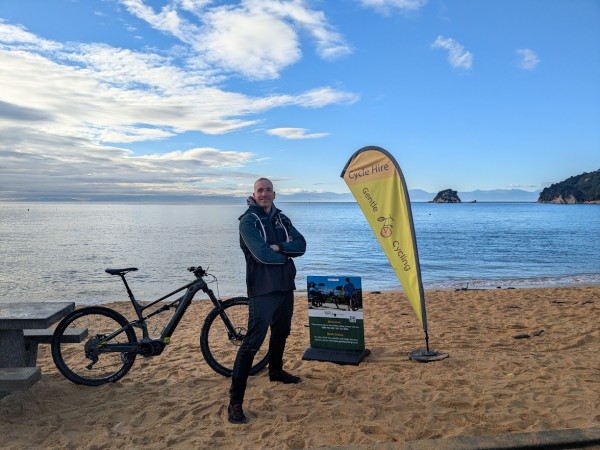Top tips for winter riding
With quieter trails, crisp air and moody landscapes, winter riding offers a peaceful, scenic alternative to the busier summer months.
While it can be a magical and rewarding experience, it does come with some extra considerations.
Nelson's Chris Whitaker (pictured below) is a self-confessed "fun-time bike specialist" and The Gentle Cycling Company cycle tour operator who loves to ride whatever the season.
Calling on his wealth of experience and knowledge, he shares some of his tips and tricks to ensure you make the most of your winter cycling adventure.

Dress smart, stay warm
Layering is your best friend when riding in winter. Start with a moisture-wicking base layer to keep sweat off your skin, and add an insulating mid-layer (like merino wool or fleece). Finish with a waterproof outer layer.
Winter days can swing between frosty mornings and mild afternoons depending on where you are in the country, so make it easy to peel off or add layers as needed.
Don’t forget:
- Full-fingered gloves to keep your hands warm on the handlebars
- A thermal skullcap or headband under your helmet to keep your ears toasty
- Shoe covers or wool socks to keep your feet dry and warm.
Be weather-wise
Always check the weather forecast before you head out. Consider planning your ride for the warmest part of the day, usually between 11am and 3pm.
Clear mornings may start with frost or black ice, particularly in shaded spots and on wooden structures, so take extra care early in the day.
Light it up
Daylight hours are shorter in winter, and visibility can change quickly with overcast skies or mist.
Even if you’re not planning to ride at dusk, it's wise to take a front white light and a rear red light. When riding in low light, set them to blinking mode during the day for extra visibility, especially on shared roads and crossings.
Plan for limited services
Winter is off-season for many local businesses along the 23 Ngā Haerenga Great Rides, so it's essential to plan ahead.
Cafés, restaurants, galleries and cellar doors may be operating on reduced winter hours or may close entirely midweek. Always check online or call ahead to confirm opening times.
Bring snacks, water and emergency supplies in case your planned lunch stop is closed
Accommodation can also book out or reduce staff in winter—another reason to pre-plan and book ahead when possible.
Ride prepared
Mechanical issues in colder months can be more frustrating, so check your gear before you roll out
Ensure tires are pumped and in good condition (consider slightly wider tires for comfort and grip on wet surfaces)
Carry a basic repair kit with a pump, spare tube, tyre levers, and multi-tool
A small thermos with hot tea or coffee can be a real treat on a chilly day!
Enjoy the off-peak magic
One of the biggest rewards of winter riding is peace and quiet. The 23 Great Rides offer a blend of world-class scenery, must-see sights, exciting activities, culture as well as delicious food and wine – all without summer crowds.
Stay safe and share the trails
Even though it’s winter, the trails are still often shared with walkers, other cyclists, and the occasional farm vehicle. Be courteous, ride at a safe speed, and let others know when you’re passing.
In wetter conditions, trails can become slippery or muddy, so ride to the conditions and brake early.
With the right gear, a flexible plan, and a bit of local knowledge like those ferry and café schedules, your adventure will be smooth, scenic, and memorable.
* Start collecting the Great Rides at your own pace. Find your next Great Ride adventure

